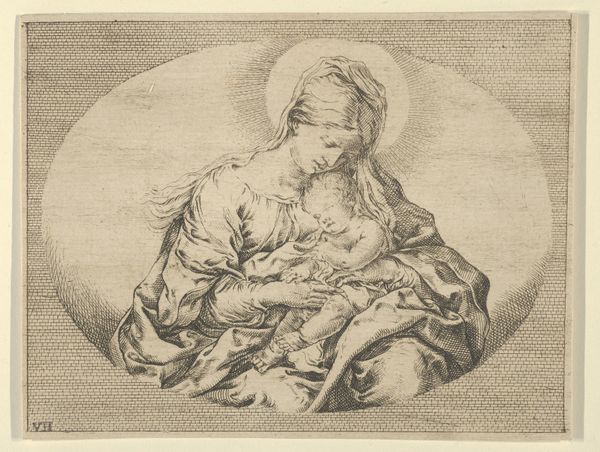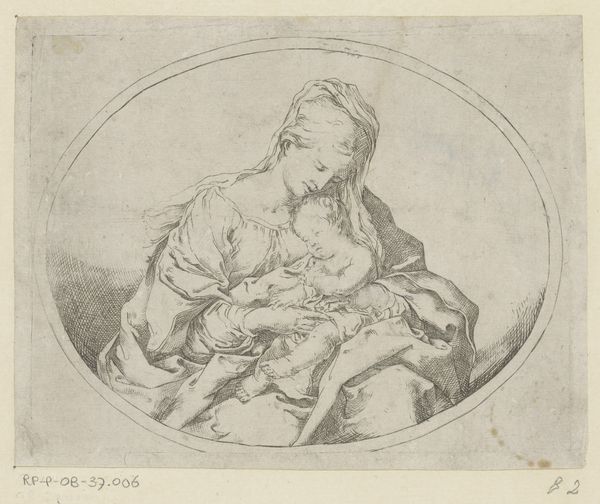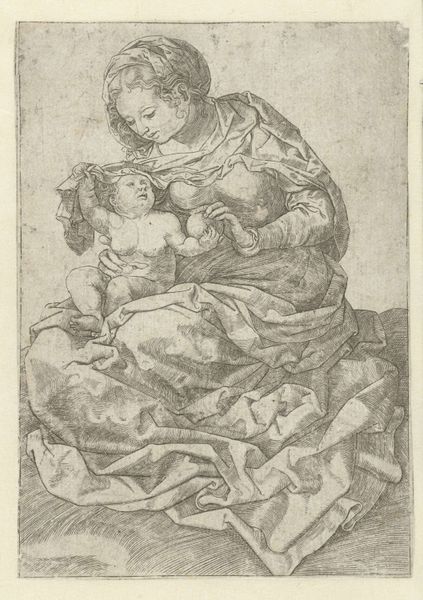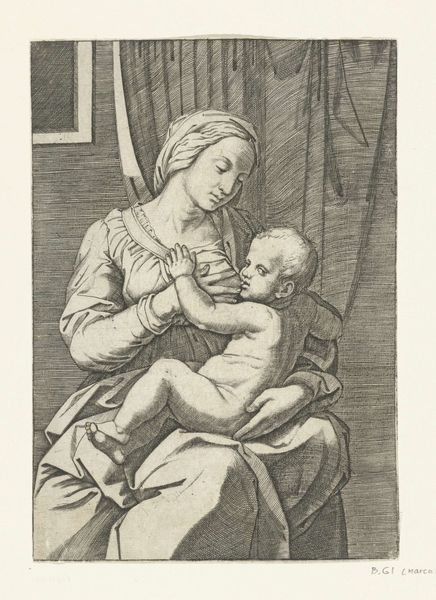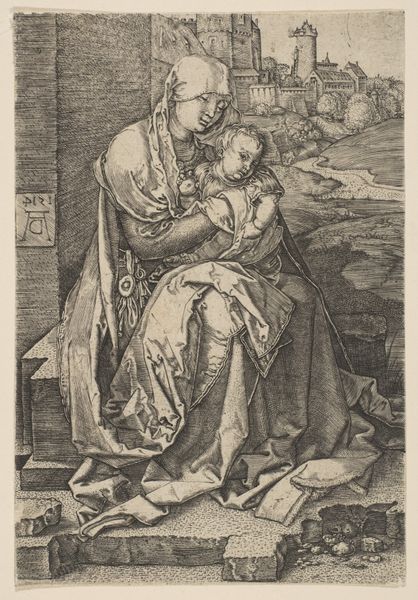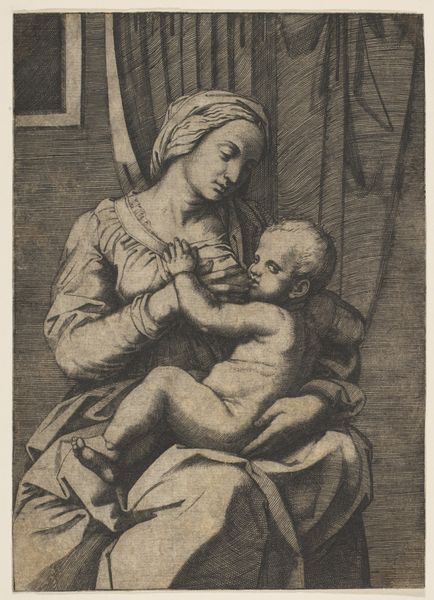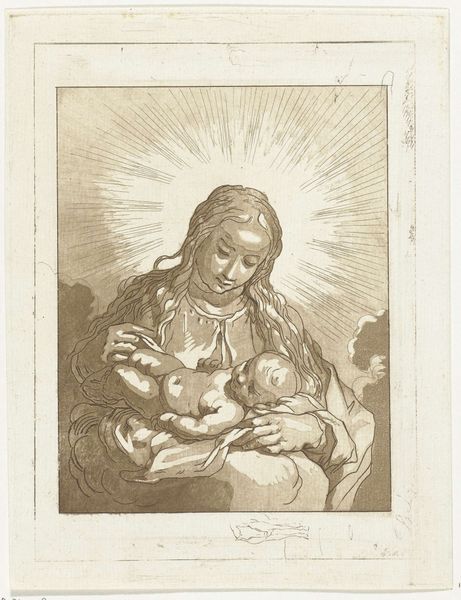
drawing, print, engraving
#
portrait
#
drawing
#
medieval
# print
#
figuration
#
form
#
madonna
#
child
#
line
#
genre-painting
#
northern-renaissance
#
engraving
Copyright: Public Domain
Editor: So, this engraving is "Virgin and Child (upper portion)," created between 1465 and 1495 by Master IAM of Zwolle. It's at the Met, which is great. The thing that really gets me is the serenity of the Madonna's face – it's so still and contemplative compared to the almost frenetic energy of the child. What do you make of that contrast? Curator: That's a brilliant observation. It's as if she's already aware of the weight of the world, while he is, understandably, grabbing at it. See how the lines radiate from behind her head, almost like sunbeams? It’s a visual language of divinity, but also a cage. A radiant, gilded cage of expectation, perhaps. Editor: A cage, that's interesting. So you're suggesting that the visual vocabulary isn't simply reverential, but…restrictive? Curator: Exactly. Think of the Northern Renaissance emphasis on detail, the almost hyper-realistic textures they achieved with engraving. It binds them to earth even as the halo attempts to elevate them. Does her downcast gaze read as piety, or a quiet resignation? Maybe both? Editor: I hadn't considered resignation. I suppose it does. It’s interesting how an artist's choices about line and light can create such ambiguity, such complexity. I was so focused on the "obvious" reading. Curator: Isn’t it glorious? That’s the power of art, isn’t it? To constantly challenge what we *think* we know, to keep us questioning. This simple engraving holds such layers of human experience. Editor: Right, exactly! Well, thanks. I see it in a totally different way now!
Comments
No comments
Be the first to comment and join the conversation on the ultimate creative platform.
